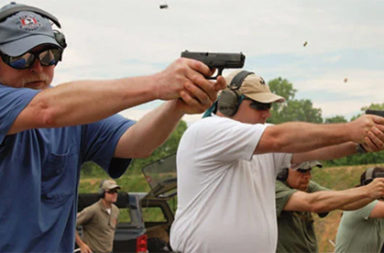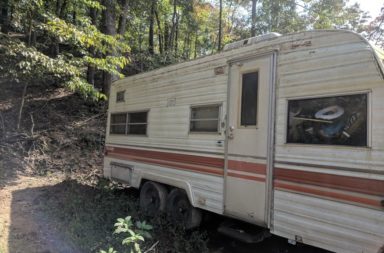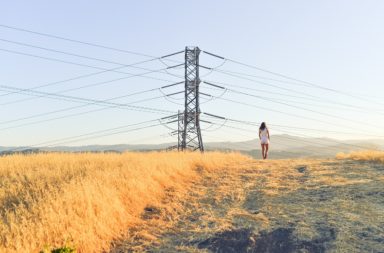Want to know how to build the 5 most common campfires?
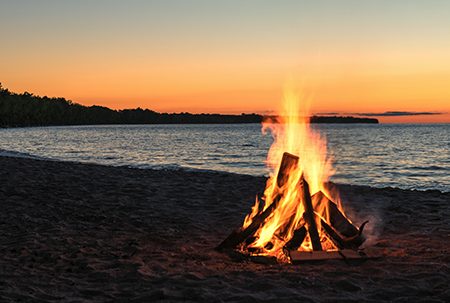
Who doesn’t love gathering around a campfire to roast hot dogs, make s’mores, or just stay warm telling ghost stories? Regardless of what you do around the fire, it’s hard to deny that campfires are one of the best parts of summer night gatherings. Before you can enjoy fireside festivities, you must first know how to create that perfect campfire. If you’ve never made a campfire before or are not sure which type you need, you’ve come to the right place.
Let’s take a look at the 5 most popular fire types and other important information you need to create that perfect campfire photo.
What Tools Do I Need?
All fire types need the same basic elements.
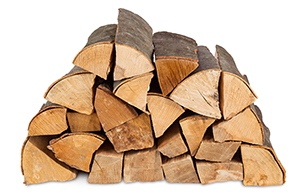
Those elements are fuel, oxygen, and heat. If you are new to the creation of fire, you may want to consider purchasing fire starting logs. These are individually wrapped and fast lighting. Depending on how large of a fire you plan to create, a bonfire log may be more useful. If you don’t have any fire starting logs, dry kindling and tinder such as twigs, grass and leaves will do. You can also collect dry wood in the form of tree branches and logs. You will also need a lighter, matches, or any object that can be used to create a spark.
What is a Campfire?
The Webster campfire definition is a fire that is built outdoors at a camp or picnic area. That’s pretty straight forward. To go further into detail, a campfire definition can also include; an open air fire created in a picnic area or campsite that can be used as a focal point for social activity, for a source of light, to stay warm when you crawl out of your tent or survival cabin, and to cook.
Bonfire vs Campfire
Since we’re on the subject of fire, you might have heard the terms campfire and bonfire used interchangeably and be wondering “what is the difference between a bonfire and a campfire?”.

Well, wonder no more. You’ve already been given the campfire definition, so what is a bonfire? A bonfire is defined as a large open air fire used for burning trash, for celebrations, or as a signal. Campfires are generally fueled by small twigs or campfire logs and are easily contained within a fire ring or fire pit. The heat from a campfire is enough to keep you warm, but not too intense. Bonfires need larger items for fuel such as wooden pallets, brush, or tables and chairs. You can also use a bonfire log, which is a new luxury, that assists in creating quick and easy bonfires. Bonfires must be built in wide open areas away from trees and brush. While it is controlled, this oversized fire is hazardous. The intense heat emitting from the bonfire makes it difficult to sit or stand comfortable within close proximity.
Types of Campfires
Now that we’ve cleared up the bonfire vs campfire confusion, let’s look at the different types of campfires. You may or may not be aware that there are a number of different kinds of campfires. The name of the campfire is based on how the wood is placed and have nothing to do with the fire shape.
Some of your more popular types of campfires are:
- Teepee fires
- Log cabin fires
- Indian campfire
- Platform
- Pyramid
The Teepee Campfire
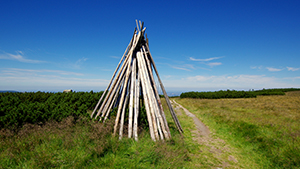
Teepee fires are one of the easiest campfires to build. Its name refers to the way logs are stacked causing it to resemble Native American Teepees.
The steps to building a teepee campfire are:
- collect approximately 10 pieces of dry kindling ranging from 8 to 10 inches.
- prop 3-4 pieces vertically, then lean the remaining pieces against the vertical pieces forming a teepee shape.
- fill in your teepee with smaller kindling
- light the fire and add more kindling to help your fire grow.
This fire burns hot and consumes wood quickly, therefore it is best used for a quick warm-up. It will also be handy for small cooking tasks.
The Log Cabin Campfire
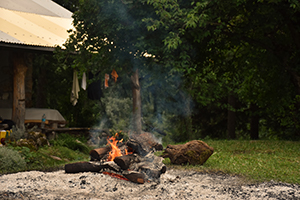
Log cabin fires use the same type of logs one would find in their home fireplace. These logs are large and thick, not at all like the smaller ones you use for the teepee campfire.
To construct log cabin fires:
- arrange two logs about 8 inches apart and parallel from each other in your fire pit
- place your next two logs perpendicularly across the first 2
- using 4 more logs, repeat the first two steps until you have formed a solid square
- add kindling in the center of the square and light your fire
Note: It is best to light the fire from the bottom. This fire requires minimum effort to maintain and gives a sustained burn.
The Indian Campfire
The Indian fire is also known as a star fire.

This particular fire is recognizable as the type of campfires depicted in the old West. You start by creating a small teepee fire using only kindling. Next you lay five campfire logs around it arranged so that they resemble wheel spokes or a star. Then you light the ends of the logs closest to the center. The fire will burn up along the logs. You continue to push the logs inwards as the fire burns. This is the best fire type when your wood supply is low as it creates a slow burning fire. It is also quick and easy to extinguish by simply pulling the logs away from the center of the fire.
Pyramid Campfire
If you need a campfire that doesn’t require constant tending, the fire pyramid is the best way to go.
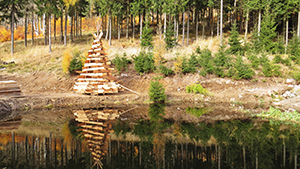
This fire can burn up to 1 hour unattended. To build this type of fire, start by collecting logs of different lengths. Place 5 same size logs parallel to each other in your fire pit. Next stack 5 slightly smaller logs perpendicularly on top of the first row. Continue this process for 5-7 layers forming a small pyramid. Be sure to leave space at the top to add tinder, then top off your pyramid with kindling. Light your fire by reaching through the logs and lighting the tinder. The fire pyramid is the best type of fire for your campsite because it is self-sustaining and lasts for at least an hour.
Tips to Staying Warm
Whether you’re using a survival cabin or a tent, you may be wondering how to safely keep your shelter warm. It’s actually quite simple. First you want to find a nice sized dry rock.
Note: Water logged rocks explode when heated. Dig a hole that fits the rock. Using your preferred campfire method, heat the rock. You will want to heat the rock for 1-2 hours, so the pyramid’s self-sustaining long lasting fire would be the best fire type for this. Once the rock is heated, transfer it to your pit. You can even seal the pit by placing a flatter rock over the hole after inserting the heated rock. For sustained heat, have another rock in the fire ready to switch out.
Conclusion
You are now equipped to enter the wilderness and brave the elements. Just remember, it’s not the fire shape but the correct construction that determines the perfect campfire. You can look back on your campfire photo with pride knowing you were the reason everyone survived!
